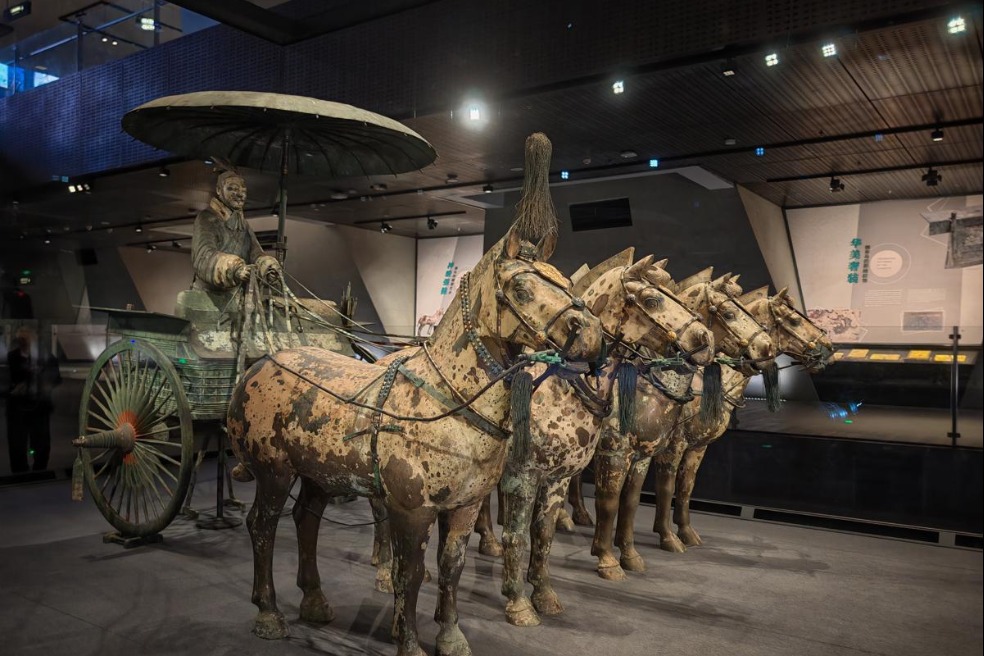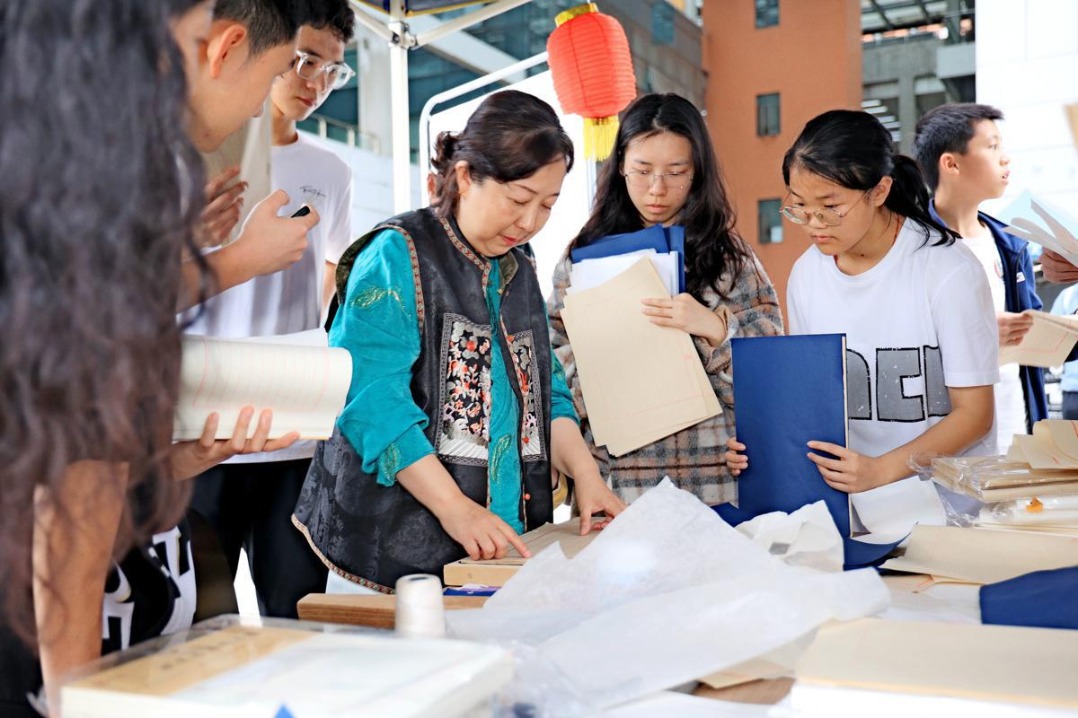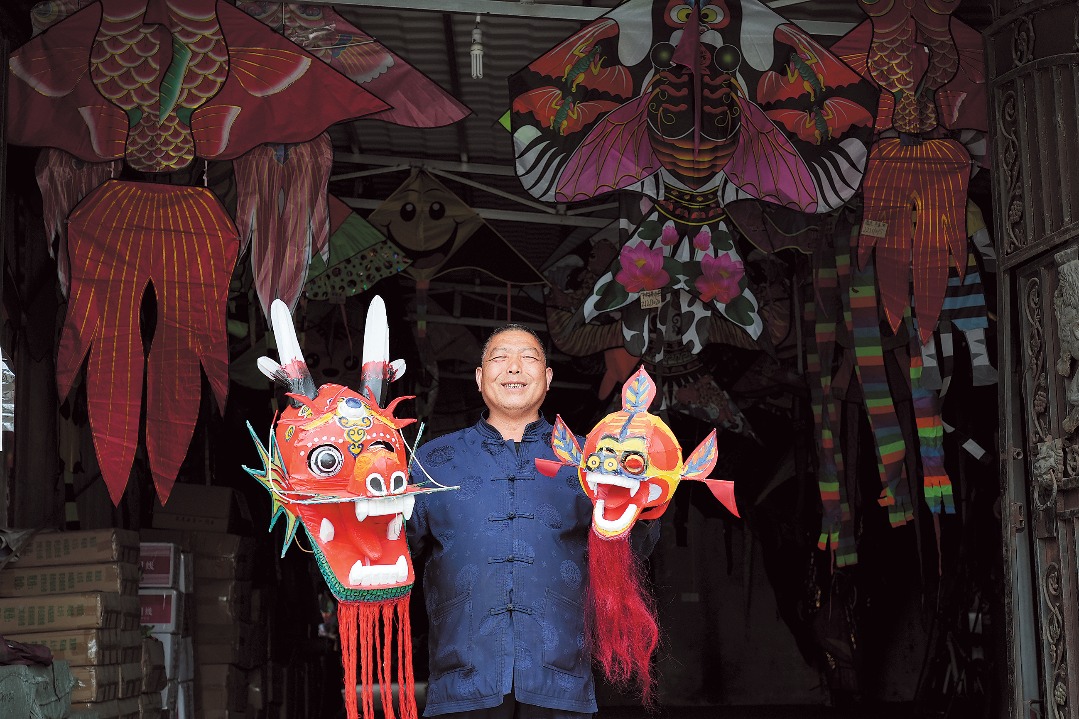In Ningxia, a chateau blends fruit of vine with rocks of desert

YINCHUAN - With its old stone buildings, tile roofs, ancient sculptures, ceilings of cork and a table made of a century-old cart wheel, the Yuanshi chateau at the eastern foot of the Helan Mountains in northwest China offers unique surroundings to wine lovers.
"We built the chateau with stones from the Gobi Desert," says Yuan Yuan, 26, owner of the Yuanshi chateau in the Ningxia Hui autonomous region. Yuan returned to her hometown after graduation, eager to pass down the winemaking skills and secrets of her father's generation.
Starting from scratch and facing competitive global wine brands, the green vineyards of Yuan's winery are interlaced with mounds of stones, distinguishing it from typical grape cultivation bases. For Yuan and her father, the stones are a vestige of the Gobi mining age in Ningxia.
"There was nothing but stones. In the 1980s, my father opened a quarry, manufactured building materials and sent them to the capital, Yinchuan," Yuan said.
Rampant mining at the time left deep pits in the open air.
"The mining industry damaged the local ecosystem," Yuan's father, Yuan Hui, said. Around 1998, he began planting trees to restore the environment. Since then, more than 2 million plants have grown to cover the landscape of about 113 square kilometers.
But the Yuan family will never forget how the land was back then. It is why they called their chateau Yuanshi, meaning "born of stones".
Yuan Hui loves all kinds of stone. "All the waste was a misplaced resource. So were the stones in the Gobi," the father said. Starting in 2008, he spent nearly six years designing and building the chateau himself, decorating the wine cellar walls with "wasted" stone.
"Wine is both global and local," Yuan Yuan said, talking excitedly about the introduction of grapes to China in the Han Dynasty (206 BC-AD 220).
At first, the winery invited foreign winemakers to grow the grapes, but because of differences in climate, Western techniques did not work.
"In 2015, experts from China Agriculture University worked with us and offered scientific guidance on growing grapes. They did experiments in our fields and vineyards, which now serve as a research base for postgraduates," she says.
Li Wenchao, an official with the region's grape industry bureau, said that Chinese wine should cater to Chinese drinkers.
"In Western dining culture, different courses are paired with different wines. But in China, people tend to choose wine according to their personal dietary habits," Li said.
Zhao Shihua, a researcher at the bureau, said that Chinese want their wine "sweet and thick". Every year, chateaus in Ningxia meet with their dealers to discuss customer feedback, and then adjust the flavor of their wines accordingly.
"There are eight major culinary traditions in China, and we make different types of wine for them," Zhao said.
One particular type of new wine from the chateau features the fragrance of tropical fruit such as litchi and pineapple.
"We also plan to offer Chinese food with our wine in the chateau, so that more people can learn about our wine culture," Yuan Yuan said.
Xinhua
- Xi sends congratulatory letter to forum on space cooperation with LatAm, Caribbean countries
- China to launch Shenzhou XVIII crewed spaceship on April 25
- Cooking convenience for cancer patients
- Liaoning achieves remarkable growth
- Low-altitude economy in Xinjiang starts riding powerful tail winds
- Greater efforts urged to improve children's living environment





































